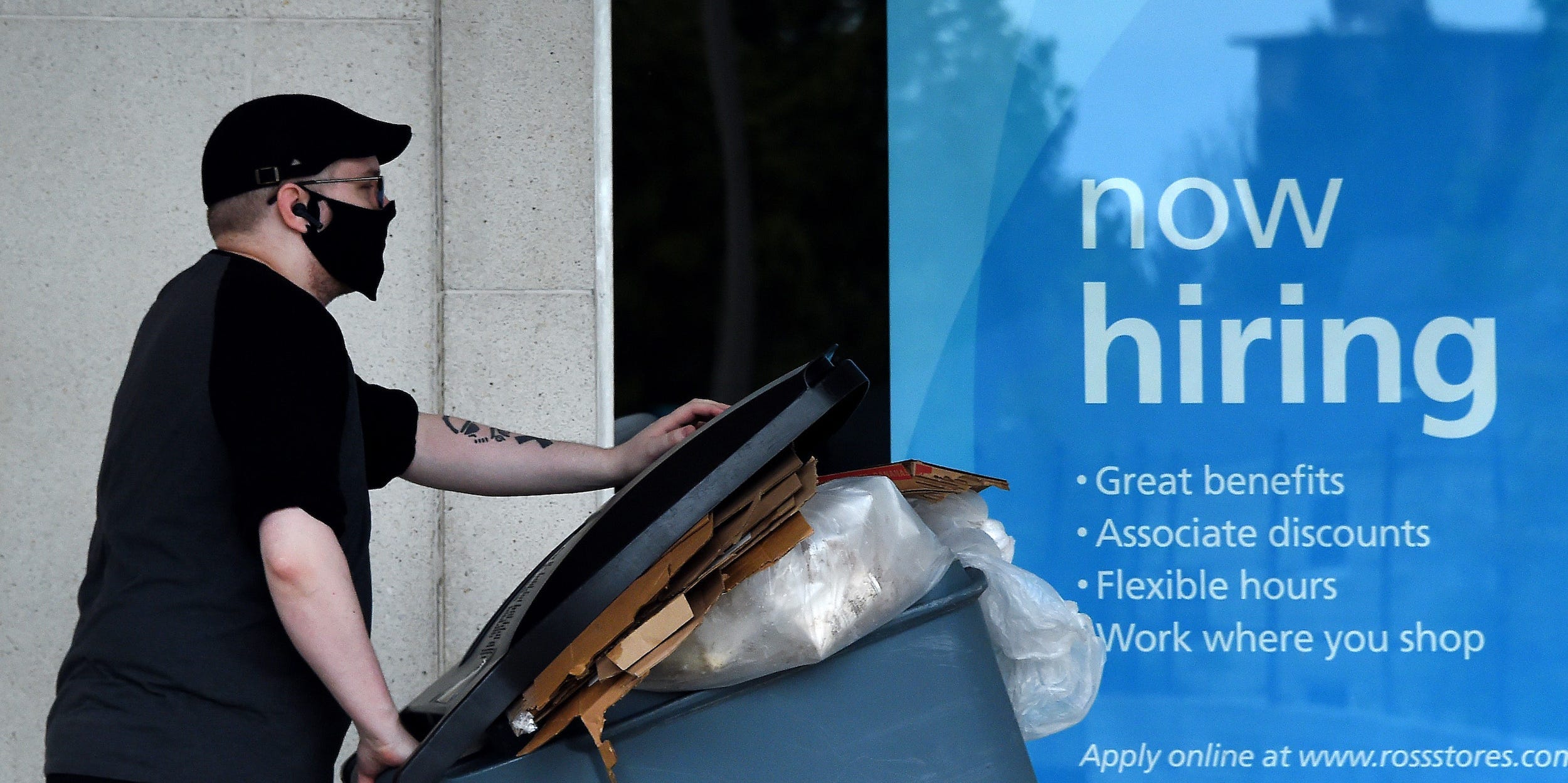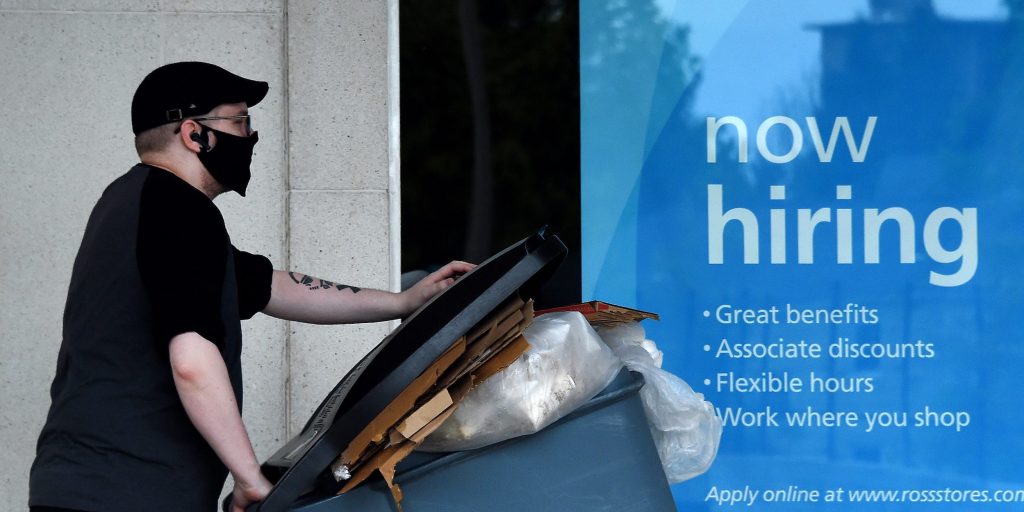
Olivier Douliery/AFP/Getty Images
- The stronger wage growth seen through spring is likely a one-time jump, Oxford Economics said.
- The labor shortage placed more power in workers' hands, but that shift is temporary, economist Gregory Daco added.
- Supply-chain issues are causing shortages and sparking inflation, and those should be sorted as the economy reopens further.
- See more stories on Insider's business page.
Amazon, Under Armour, Chipotle, and McDonald's raised their starting wages through the spring, and overall wage growth accelerated to its fastest rate since the 1980s in May as businesses scrambled to attract workers.
But don't count on it being a revolutionary jump in worker power, at least not according to Oxford Economics, whose chief US economist, Gregory Daco, wrote on Wednesday that the recent wave of wage hikes is most likely a one-off.
"While lower-paying jobs are getting unprecedented wage growth, we believe this reflects a one-time releveling of low wages rather than a permanent shift in workers' bargaining power," he said.
It's also unlikely that businesses will factor higher inflation into their 2022 wage-setting plans, Daco added. Unless stronger productivity and higher profits spur a rethink, businesses are likely to stick to the status quo seen before the pandemic, the economist said.
More broadly, Daco sees only a 10% to 15% chance that inflation spirals upward and becomes persistently elevated. Faster price growth currently reflects a series of imbalances between supply and demand, leaving strong consumer spending to drive price hikes. But while businesses' pricing powers sit near record highs, a steady push for higher prices is unlikely to emerge, the economist said.
For one, previous instances of above-5% inflation took several years to materialize. Estimates of future inflation see price growth cooling over the next few years, and officials have hinted that stronger inflation will fade starting in early 2022.
Periods of steadily stronger price growth also rely on several factors, Daco said. Inflation averaged 5% through the 1940s due to deficit spending on World War II, loose monetary policy, and the end of price controls. The high-inflation regime of the 1970s required the politicization of the Federal Reserve, the end of the gold standard in 1971, and oil price shocks throughout the decade. With the pandemic threat fading and gauges of economic activity returning to their previous norms, it's unlikely enough factors will keep inflation elevated, Daco said.
Instead, Americans will likely curb inflation on their own, he added. Soaring prices will cut consumer demand, particularly in sectors like used cars and housing where inflation is already high. As spending weakens, suppliers will have more time to catch up and better meet consumer demand.
Other structural factors, ranging from sustained globalization to a potential surge in productivity, will also help keep a lid on inflation, Daco said. And while the Fed aims will let price growth run hot to generate a stronger labor-market recovery, its hawkish shift suggests it's ready to act if inflation risks intensify. The recent commentary should further anchor inflation expectations and keep consumers' spending habits in check, the economist added.

